

William Stopford
Every SUV, ute and van discontinued in Australia in 2025
4 Hours Ago
The Niro Hybrid offers a sporty drive and impressive efficiency, but a dated cabin, high price and expensive service costs dent its appeal.



Marketplace Editor
New from
$39,990
excl. on-roads

Marketplace Editor
New from
$39,990
excl. on-roads


Marketplace Editor
New from
$39,990
excl. on-roads

Marketplace Editor
New from
$39,990
excl. on-roads
Quickly see how this car stacks up against its competition. Select any benchmark to see more details.
Where expert car reviews meet expert car buying – CarExpert gives you trusted advice, personalised service and real savings on your next new car.
The Kia Niro has only recently launched in Australia, despite being on sale overseas since 2016.
Like the related Hyundai Ioniq, the Niro is available in Hybrid, Plug-in Hybrid and Electric guises, though its more conventional crossover body helps it fly under the radar instead of screaming “hey, I’m an eco warrior!”
Kia Australia has made it no secret the current Niro is nearing the end of its life – despite the facelifted model launching globally in 2019, there’s an all-new model headed for production next year.

Regardless, Australia’s increasing demand for hybrids and EVs pushed the Korean brand to launch its first electrified model and get a foot in the door.
Here on test we have the 2021 Kia Niro Hybrid Sport, the higher-spec self-charging petrol-electric hybrid version that has the dual role of competing with the Toyota C-HR Hybrid and RAV4 Hybrid, given its mid-$40,000 price point.
Is Kia’s first attempt at a hybrid SUV worth getting despite the imminent next-gen model? Or, are you better off holding off or heading to a Toyota showroom?
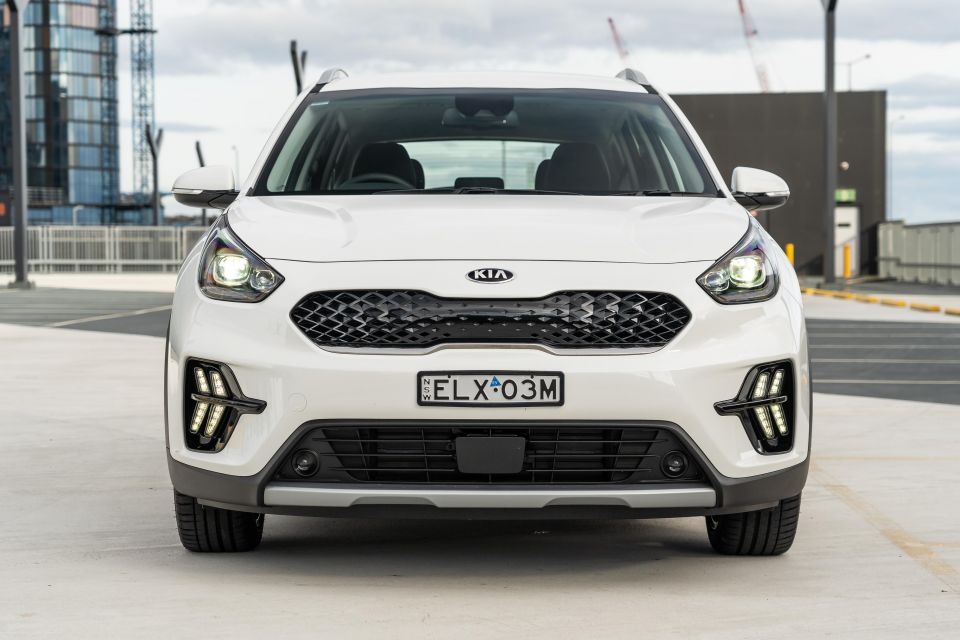
The standard Niro Hybrid is the most affordable in the range, starting at $39,990 before on-road costs for the base Niro Hybrid S.
Our Niro Hybrid Sport tester sees that ticket climb to $43,890 plus on-road costs.
As is typical Kia practice, though, there’s drive-away deals advertised on the company’s website. The Niro Hybrid S is listed at $41,990 drive-away while the Hybrid Sport is $45,990 drive-away.
See the full Niro price list below:
Drive-away prices are based on a Melbourne postcode (3000)

Hybrid rivals are few and far between in Australia, coming from within the Hyundai/Kia group or petrol-electric pioneer Toyota.
The Hyundai Ioniq Hybrid, which offers a similar model range and is essentially the brand’s Niro equivalent, starts around $39,500 drive-away for the entry-level Elite and $44,400 drive-away for the Premium.
Meanwhile, Toyota offers the C-HR Koba Hybrid and GR Sport Hybrid for $37,665 plus on-roads, as well as the RAV4 GXL Hybrid ($39,915) and Cruiser Hybrid ($43,415). Both RAV4 models listed are front-wheel drive.
You could also throw in the Subaru Forester, available in Hybrid L ($40,490) and Hybrid S ($46,490) guises, though the Subaru is more of a mild-hybrid in terms of execution.
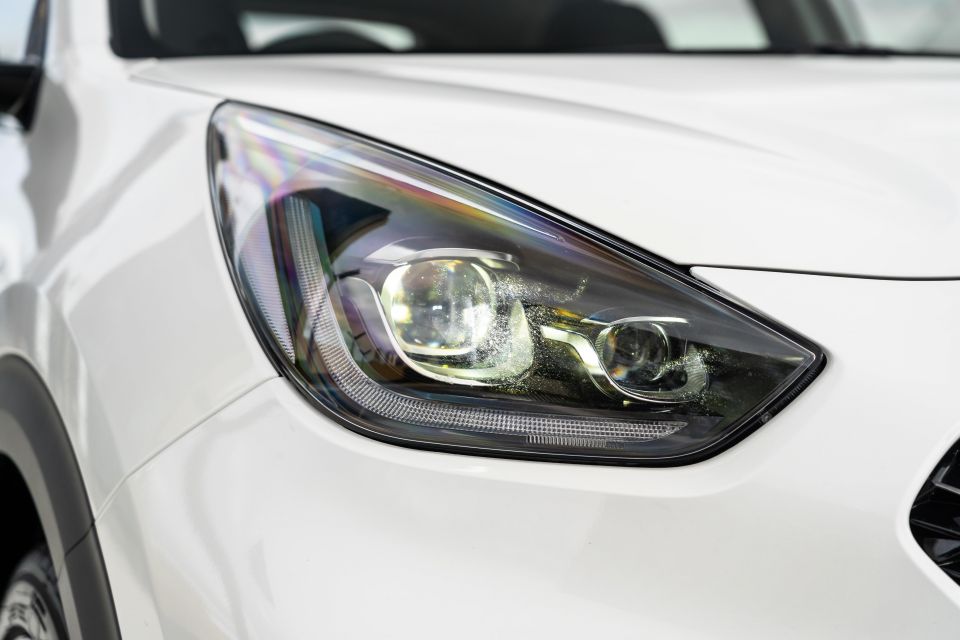
Buy your new car without the stress. It's fast, simple and completely free.

Great service from Travis and team, second time I have used this business would not hesitate to recommend them to anyone
Craig C.
Purchased a Ford Ranger in Sunshine Coast, QLD
CarExpert helped Craig save thousands on his Ford Ranger, now let us save you on your next new car.
Find a dealThe Niro Hybrid Sport gets the following equipment highlights:
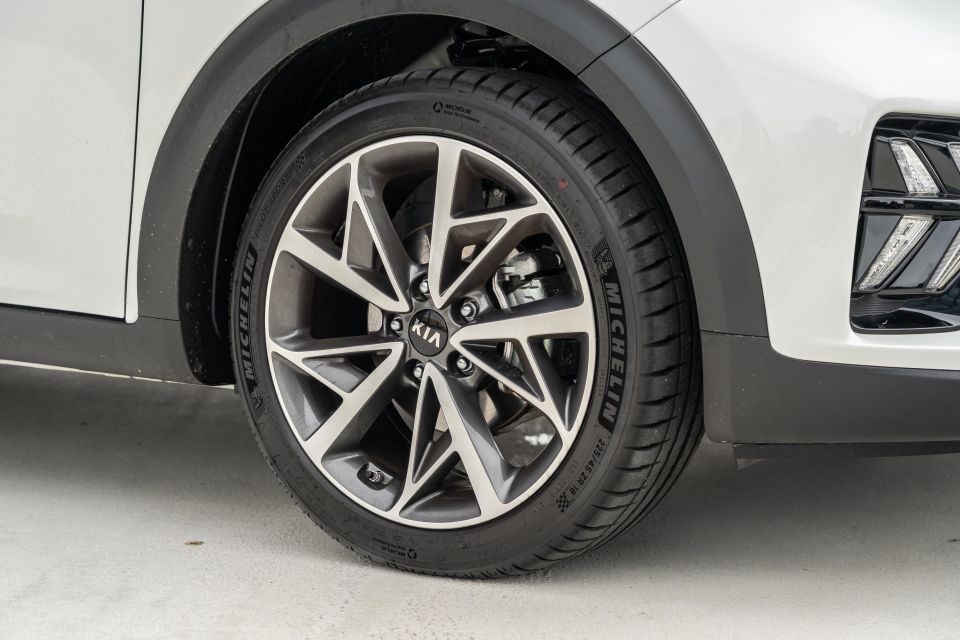
That’s on top of the base ‘S’ specification, which gets:

While the standard specification across both trim levels is pretty comprehensive and covers most of what you’d expect for the price point, there are some things missing that oddly are available elsewhere.
There’s no heated or ventilated front seats on the top-spec car, despite it being offered in Korea, nor is there a wireless phone charger, keyless entry/start (on a $45,000 car), or driver’s seat memory. All of these are offered on the Korean model which comes out of the same factory.
High-spec Niros in the Korean domestic market also offer a larger 7.0-inch digital instrument display with extended functions, and the ability to transform into a big virtual tacho when you flick the Niro into Sport mode.
None of these are particularly ‘essential’, but for a mainstream small SUV with a price rivalling premium marques it seems a bit off.
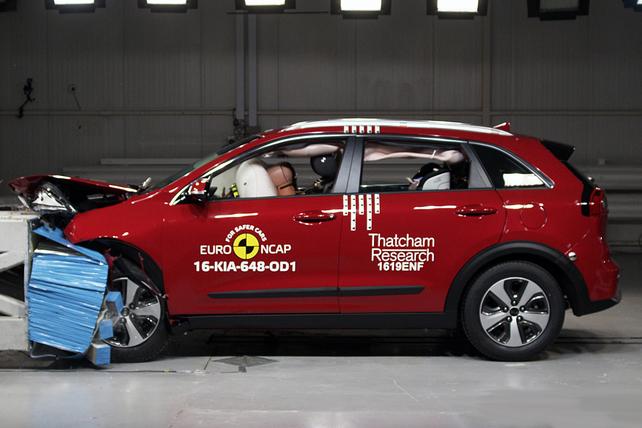
The Niro Hybrid and PHEV both wear five-star ANCAP safety ratings with a 2016 date stamp, based on tests conducted by Euro NCAP. Electric models are unrated.
Category scores were 91 per cent for adult occupant protection, 80 per cent for child occupant protection, 70 per cent for pedestrian protection and 81 per cent for safety assist. Keep in mind this is based on older criteria.
All Niro variants come standard with:
Stepping up to the Sport adds:
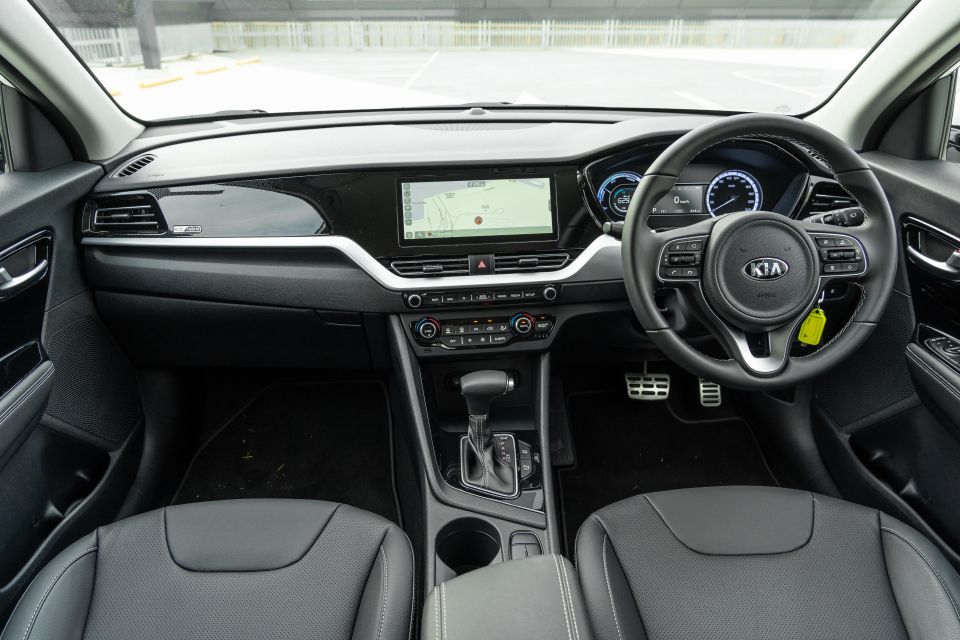
If you’re familiar with Kia’s latest models like the Sorento, Seltos or even the Cerato, the Niro’s cabin may feel like a step back in time.
For some it may be a bad thing, for others a good thing. For me? It’s a mixed bag.
The Niro’s 2016 birthdate is fairly evident in the conventional cabin design, which is actually quite similar to the current Sportage, set to be replaced before the end of the year.
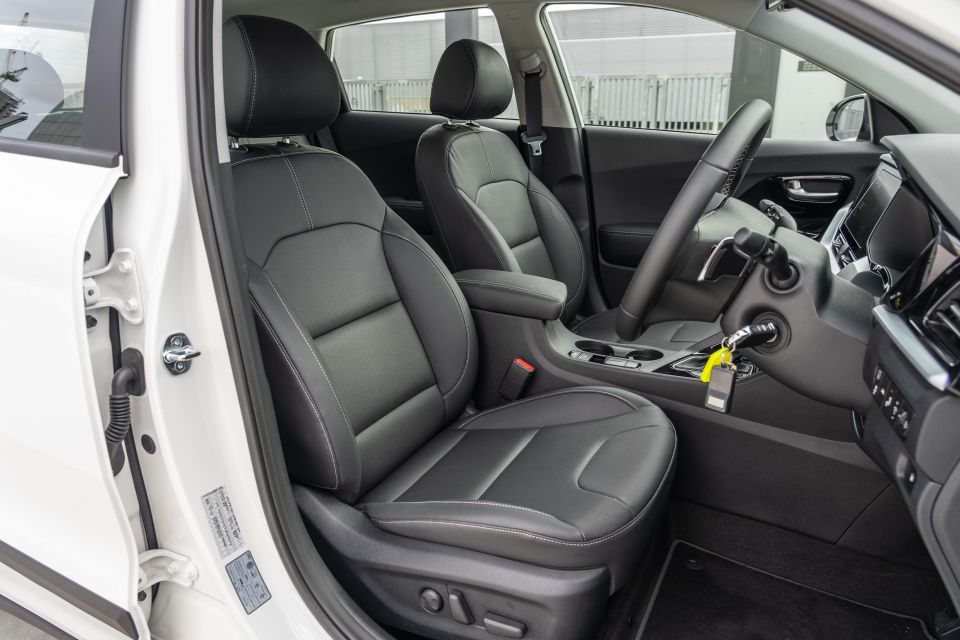
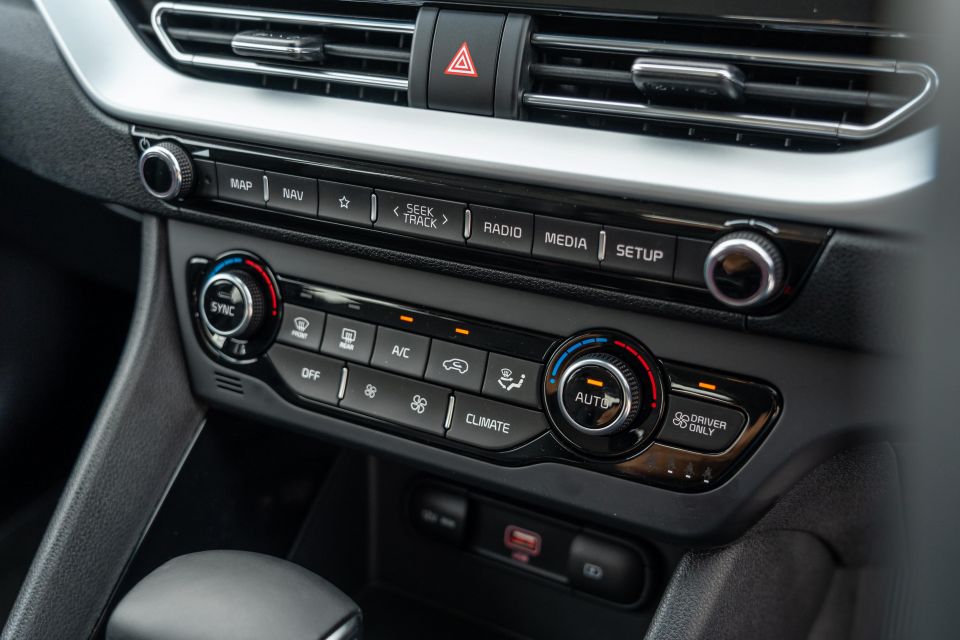
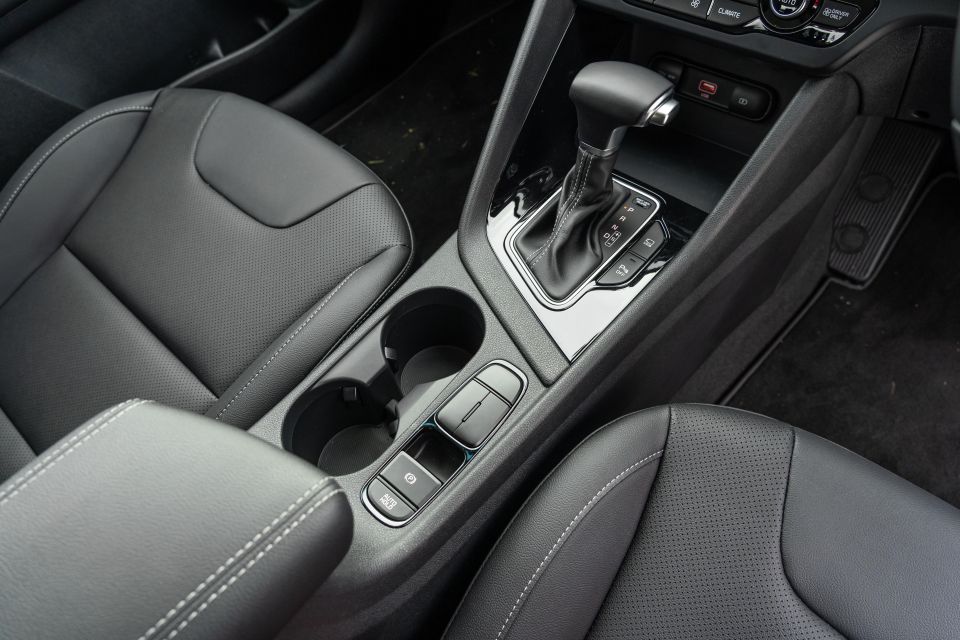

All the basics are covered – a large 10.25-inch central touchscreen in this Sport grade, a 4.2-inch TFT driver’s display flanked by conventional dials, physical switchgear and HVAC dials, a T-bar gearshift, as well as a good mix of soft-touch and hard-wearing surfaces.
Compared to the similarly-sized Seltos, the squishy dash and door trims feel a bit more upmarket, though the older Kia steering wheel and basic instrument cluster do look dated. The Niro will pick up Kia’s new badge on its nose and on the steering wheel in the coming months.
The overall feeling of space is good thanks to the high roofline and generous glasshouse, and there’s a good range of electric adjustment for the the driver as well as manual movement in the steering column. Pity we don’t get the option of driver’s memory settings in Australia.
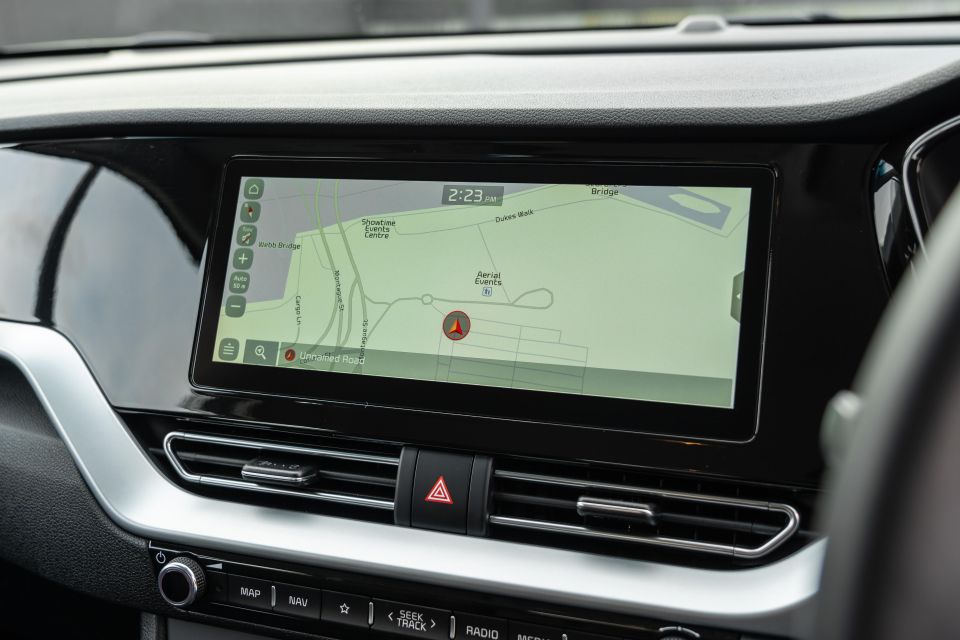
Hyundai and Kia’s 10.25-inch touchscreen is easily one of the best in the business. The infotainment feels fresh and upmarket, despite the Niro’s age.
With crisp graphics, quick response times and a healthy features list – inbuilt navigation, wired Apple CarPlay/Android Auto, DAB+ radio, Bluetooth phone/audio – it does everything you’d want it to and then some. Try Google Maps in Satellite mode with this screen and thank me later, it’s lovely.
Audio quality is pretty good for a non-branded system, as the Niro Hybrid Sport misses out on the eight-speaker JBL premium sound system available in the EV Sport. It’s clear without being super deep and bassy.
Storage is alright, with a cubby under the centre armrest up front, large cupholders and a nook ahead of the shifter under the centre stack. The latter lacks a Qi wireless phone charger like high-spec Korean models.


The second row is probably where the Niro makes a case for itself against more compact small SUV rivals nudging the $40,000 mark.
Being on the larger side of ‘small’, the Niro is like the Seltos in offering proper accommodation for adults in the back seat. I’m around 6’1 and fit comfortably behind my own driving position – the scalloped front seat backs definitely make a difference in the kneeroom department.
The Niro boasts directional air vents in the rear, a fold-down centre armrest with cupholders, and a single map pocket behind the front passenger’s seat. Bottle holders in the rear doors round out the passenger amenities, as there’s no rear power outlets (USB or 12V) for mobile devices.
Parents can make use of the ISOFIX child seat mounts on the outboard positions, and there’s top-tether points across all thee rear seats.
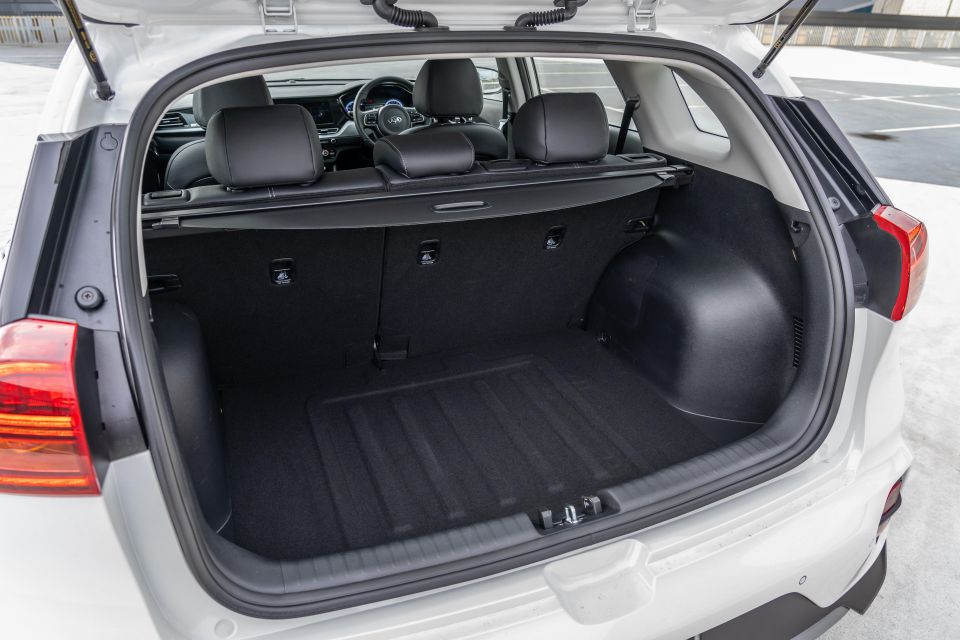
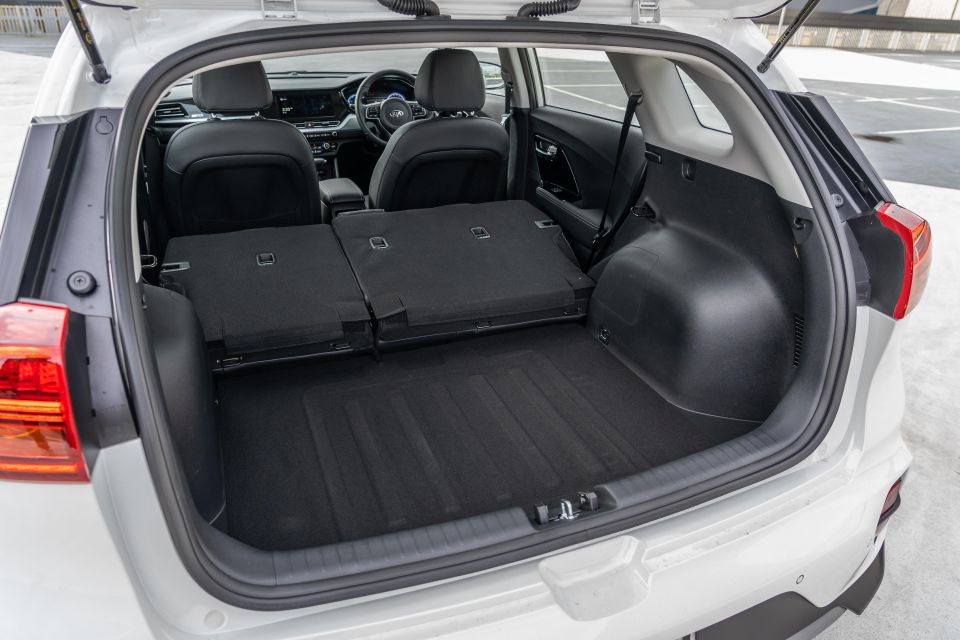
Luggage space is rated at 410L in five-seat configuration, expanding to 1408L with the second row folded. It’s quite a bit larger than the PHEV (324L/1322L) due to the smaller battery being mounted under the rear seats rather than the boot floor, though the EV still boasts the biggest volume at 451L/1405L.
It’s about 20L off the volume quoted by the similarly-sized Seltos, but bigger than a Hyundai Kona or Toyota C-HR. The space itself though is wide and the load lip is really low. Getting heavy stuff in and out shouldn’t be too much of an issue.
What isn’t so great or SUV-like is the lack of an adjustable floor, as there’s quite a large hump between the boot floor and rear seat backs as demonstrated above. It’d just be the cherry on top to make trips to IKEA a cinch.
Under the boot floor is a space-saver spare wheel.
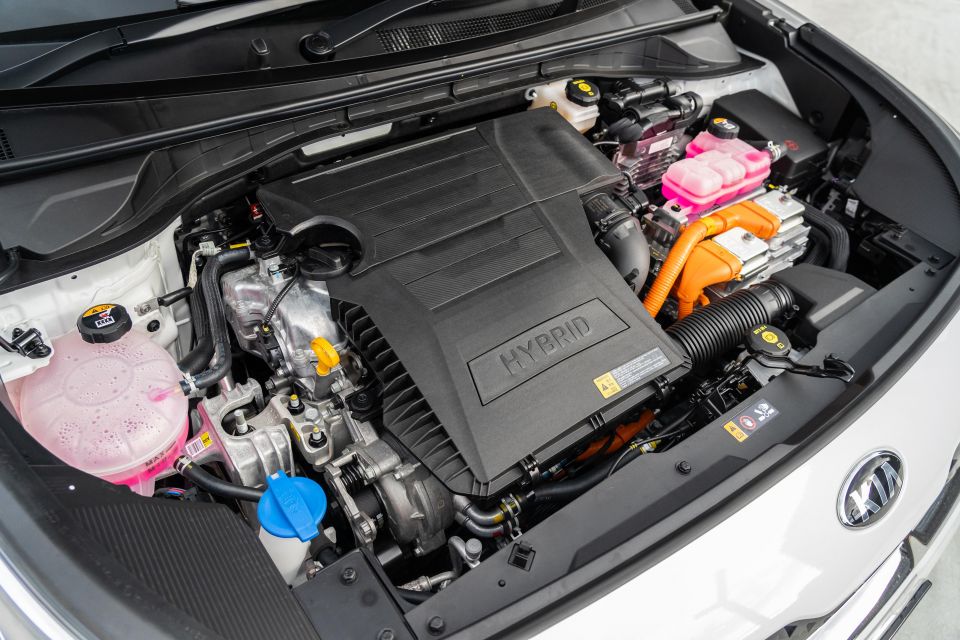
Where expert car reviews meet expert car buying – CarExpert gives you trusted advice, personalised service and real savings on your next new car.
The Niro Hybrid teams a 77.2kW/147Nm 1.6-litre ‘GDi’ naturally-aspirated four-cylinder petrol engine with direct injection with a 32kW/170Nm electric motor and a 1.56kWh lithium-ion battery pack mounted under the rear seat.
System outputs are rated at 104kW (5700rpm) and 265Nm (4000rpm), with drive sent to the front wheels via a six-speed dual-clutch automatic transmission. The electric motor is parallel – i.e. mounted to the transmission.
Kia claims the Niro Sport with its 18-inch rims and Michelin Pilot Sport performance tyres will return 4.4L/100km on the combined cycle, with 91RON regular unleaded compatible with the 45L fuel tank. Theoretically, it should be able to nudge 1000 kilometres between fills.
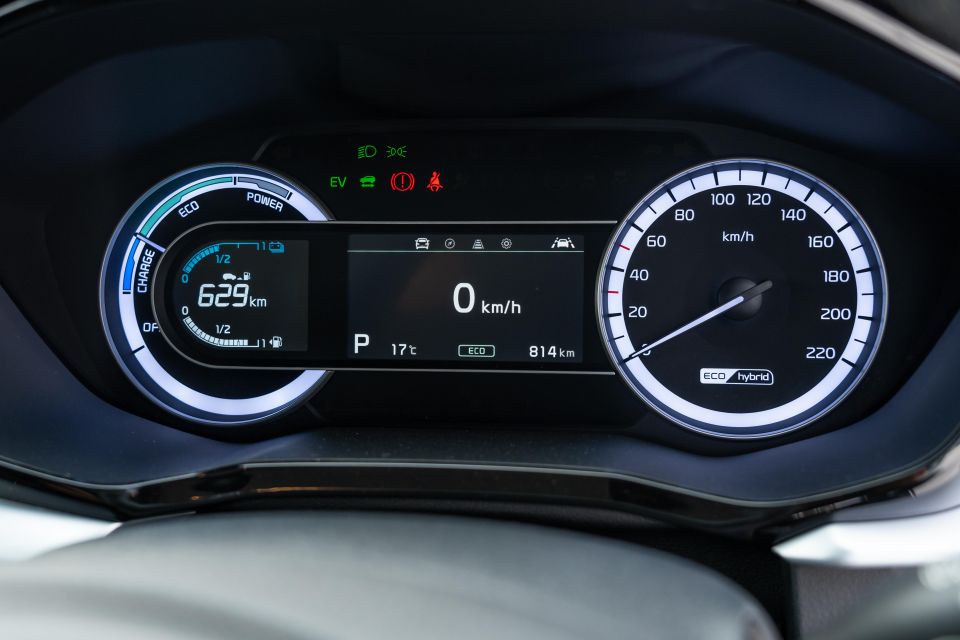
Opt for the Niro Hybrid S with 16-inch wheels and Michelin Energy Saver+ low rolling resistance rubber, and the combined fuel claim drops to just 3.8L/100km.
On paper, the Niro’s outputs are between the Toyota C-HR Hybrid (90kW) and RAV4 Hybrid (160-164kW), while the fuel consumption claims are line-ball with the C-HR Hybrid (4.3L/100km).
The Korean brand also says the Niro Hybrid can drive at speeds up to 120km/h in EV mode, and is rated to tow up to 1300kg(braked) with 100kg max downball load.
As a refresher, Kia also sells the Niro PHEV with the same engine, a slightly more powerful 44.5kW/170Nm e-motor, and a larger 8.9kWh battery capable of 58km of EV range (NEDC). Fuel consumption also drops to just 1.3L/100km.
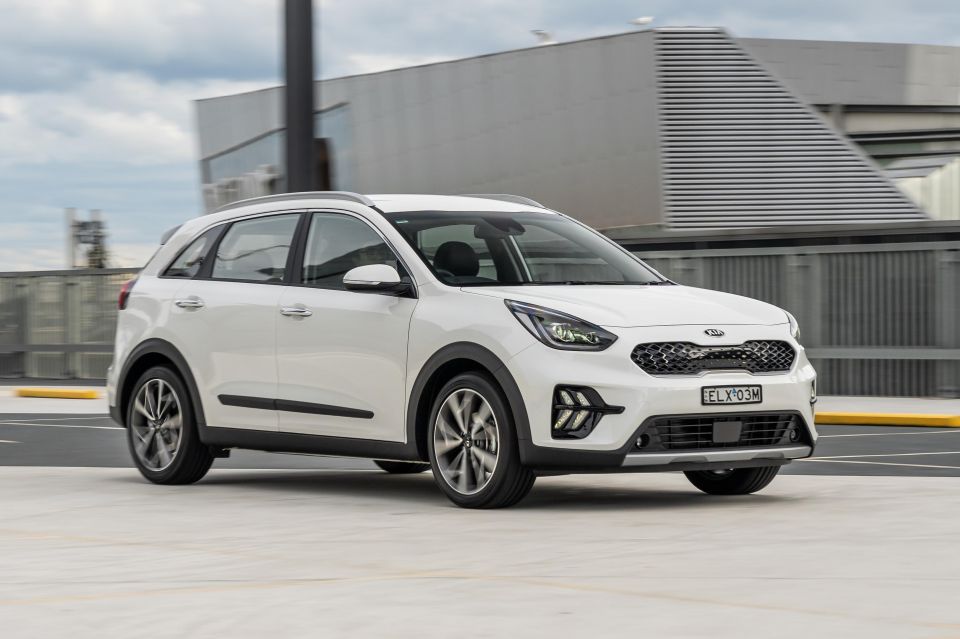
This was my first time driving a hybrid car with an actual transmission rather than Toyota’s staple e-CVT. I wasn’t sure what to expect.
It’s an interesting path Kia has taken here, because the Niro Hybrid does its best to behave like a normal car with electric assistance – but it can be hard to get your head around the revs rising and falling as the Eco meter (in place of a tacho) progresses through Eco, Power and Charge.
With just 32kW and 170Nm, the e-motor doesn’t quite have enough grunt to keep up with traffic off the line without the petrol engine cutting in, but it does a good job of getting the Niro off the line and maintaining speed once the petrol engine shuts off at urban speeds.
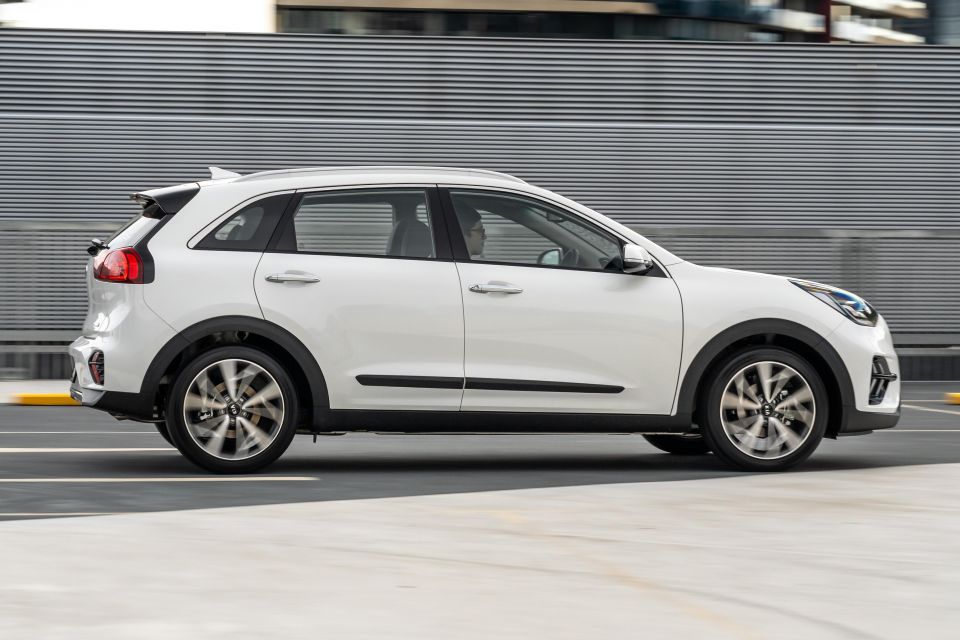
Unlike some Toyota hybrids – including the C-HR Hybrid I tested alongside the Kia – revving the Niro out doesn’t transmit a droney, thrashy note into the cabin. The 1.6L GDi petrol is essentially a non-turbo version of the motor used in the likes of the i30 N Line, Kia Seltos and Cerato GT. It’s a little buzzy at times, but it isn’t half bad.
The dual-clutch transmission gets help from the electric motor to smooth out the launch process to mitigate or minimise that jerky, hesitant low-speed feel that’s a common trait of DCTs, and it mostly does a good job at shifting quickly and intuitively. As we’ve found with other Hyundai/Kia DCT-equipped models, however, the step from first to second can still have an elastic feeling.
Otherwise, the Niro feels more responsive than something like a C-HR Hybrid or Corolla Hybrid, and gets up to speed in a reasonable fashion. I wouldn’t call it fast, but if you need a quick burst flick the gear selector into Sport and it gets along nicely even up to freeway speeds.
The firmer suspension tune definitely gives it a ride in line with its Sport badge, but the Niro is far from uncomfortable. It can get a touch busy over pimpled city tarmac and tram/train tracks, however.

It also isn’t the last word in on-road refinement, at least on the 18s and Michelin Pilot Sport rubber exclusive to the Hybrid Sport. There’s noticeable road noise over rougher patches of black top though it’s no worse than the aforementioned C-HR. We imagine the 16s and eco tyres of the S would go a long way to addressing these complaints.
From a handling perspective the Niro has a sportier setup, with a low centre of gravity compared to most crossovers and a pointy front end. The weightier steering feels progressive and accurate, and there’s taut body control in the bends – likely courtesy of the European setup local models feature.
The Niro is at its best in urban environments and on suburban highways, where its drivetrain is at its most efficient travelling between 60 and 80km/h. The petrol and electric motors work well together and it’s a nice feeling to see the EV icon constantly show up in the cluster letting you know you’re saving fuel.
At parking speeds as well, you’ll hear the Niro make a whirring, UFO-like noise that’s letting pedestrians and other road users know the vehicle is coming even when the engine is switched off. It’s identical to the noise emitted by the EV version and the Hyundai Kona Electric.

The backup ‘bong’ noise, though, isn’t as fun given it sounds like you’re backing up some cutesy truck. We can appreciate its real-world benefit, however.
Like all of Kia’s current models, the Niro comes decked out with a suite of active safety and driver assist features, all of which worked as expected.
The adaptive cruise control and Lane Following Assist functions are good companions for extended freeway stints, essentially facilitating semi-autonomous driving with your hands on the wheel, while the Sport’s blind-spot monitoring and rear cross-traffic alert functions also earn their keep in everyday situations.
Unfortunately the Niro is yet to receive the enhanced ‘Assist’ or ‘Collision Avoidance’ versions of the latter functions, but it’s still pretty well kitted out in this regard nonetheless.
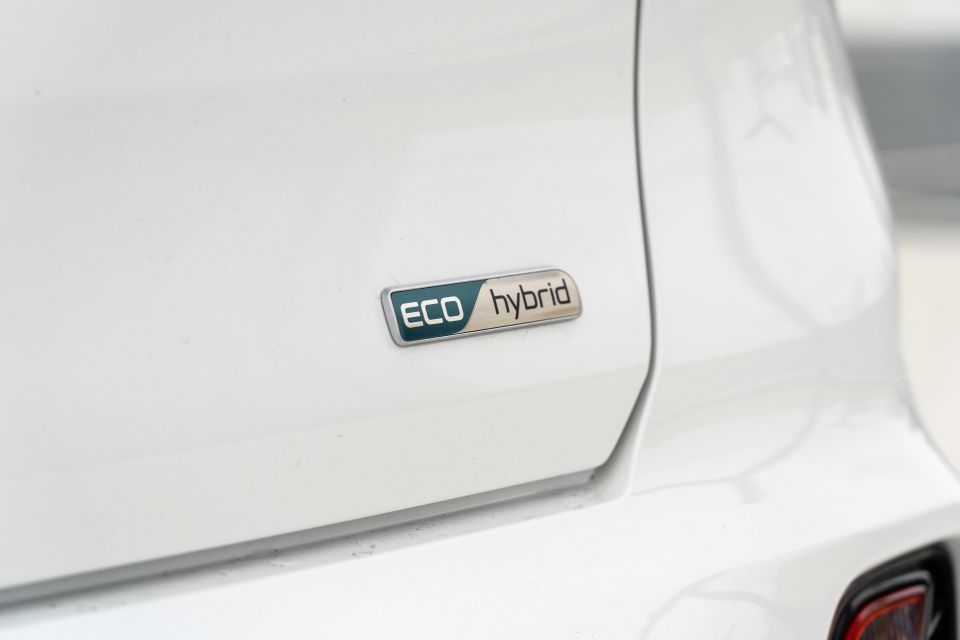
Kia provides a seven-year, unlimited-kilometre warranty, with seven years of capped-price servicing (annual or 15,000km intervals) that you can pre-pay or pay as you go. There’s also seven years of roadside assist.
Exceptions to the warranty term are the high-voltage battery and electric motors which are covered by a seven-year/150,000km warranty. You’re entitled to a warranty claim if the battery loses more than 25 per cent of capacity within the seven-year period.
As for servicing, the first five visits for the Niro Hybrid and PHEV will cost $286, $487, $355, $871 and $322 – equal to $2321 over 60 months/75,000km. For the full seven-year program, it totals $3500.
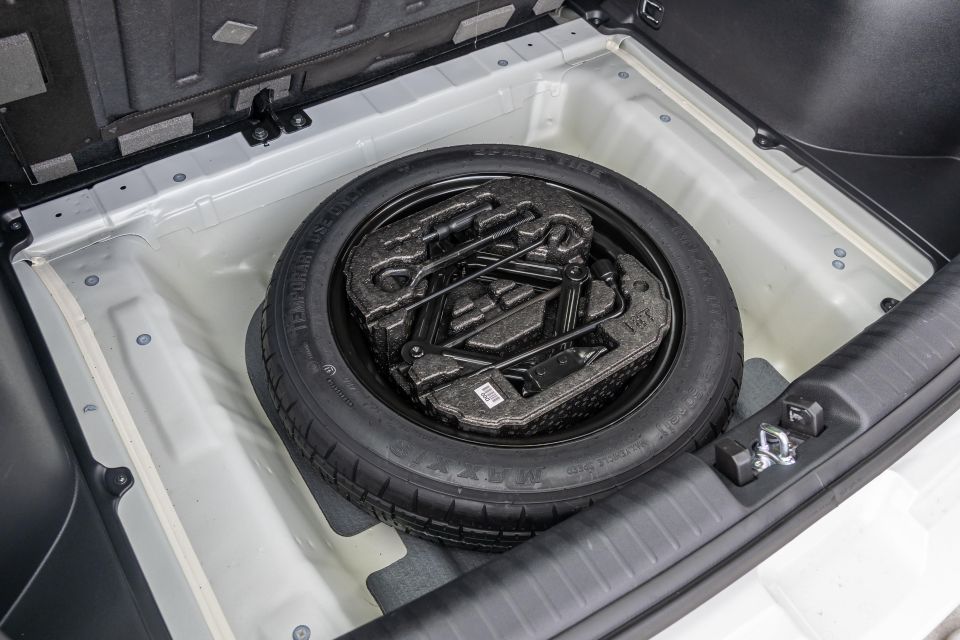
That’s quite a bit more than Toyota’s models, which for the C-HR Hybrid are $200 a pop or $1000 over five years, while the RAV4 Hybrid 2WD is $215 a pop for five years totalling $1075.
In terms of real-world fuel consumption, we finished our week of testing sitting around the 5.0L/100km mark according to the Niro’s trip computer. Our testing was a mix of urban and freeway driving – the latter where low-power hybrids aren’t able to enter EV mode as often to maintain speed.
Several drives skewed more towards 60-80km/h suburban roads yielded 4.1-4.3L/100km, which is pretty impressive. The C-HR Koba Hybrid we were testing at the same time (comparison coming soon), returned similar figures.
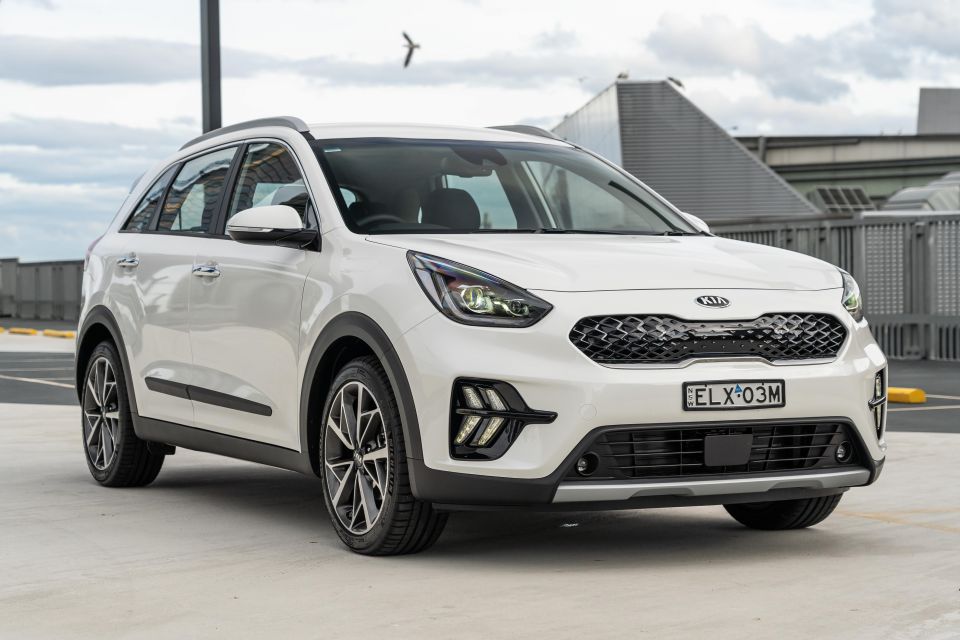
The Kia Niro has solid foundations and is a competitive rival to the likes of the Toyota C-HR Hybrid and RAV4 Hybrid. However, given how much time Kia had to package and specify the product for Australia, the approach feels a tad half-baked.
At $45,990 drive-away, it’s missing too many features for a compact SUV at this price point, and is outgunned by the similarly-priced RAV4 Hybrid in terms of performance and practicality. The 18in wheels and performance tyres also dent on-road refinement, which is disappointing.
The Kia shouldn’t have you waiting 6-8 months for it to be delivered, though, and offers better infotainment and tech than its Toyota counterparts, it’s just a shame the pricing and specification for our market is a little off the mark.
Should you buy one? Perhaps take it for a drive and see if you feel you get your money’s worth from an equipment perspective. I’d also see if you can swap the tyres for lower rolling resistance rubber or even sub in the S’s 16s for better ride and refinment.
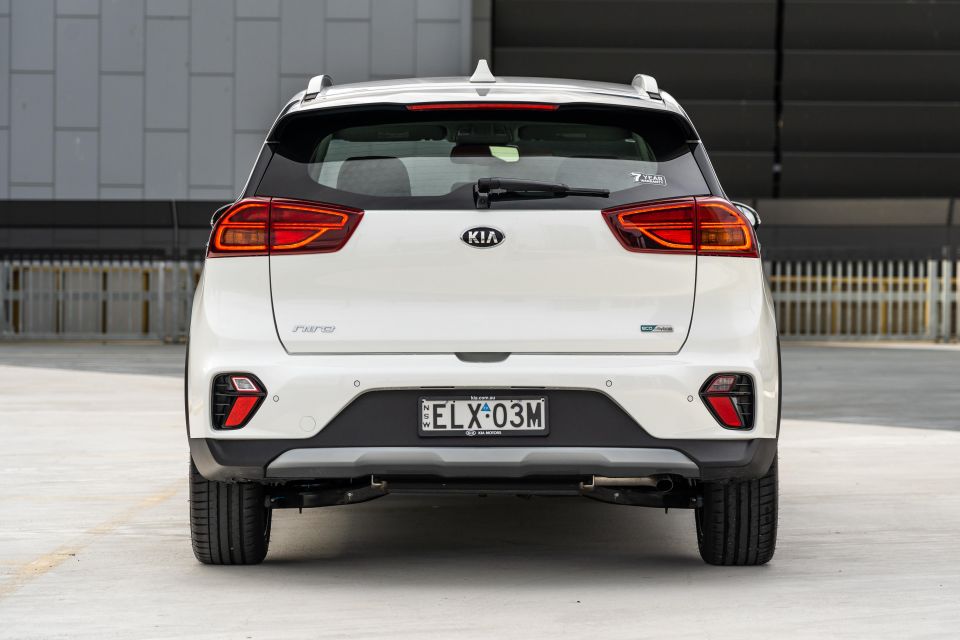
Click the images for the full gallery
MORE: 2021 Kia Niro Hybrid v Toyota C-HR Hybrid comparison MORE: Everything Kia Niro
Where expert car reviews meet expert car buying – CarExpert gives you trusted advice, personalised service and real savings on your next new car.
James Wong is an automotive journalist and former PR consultant, recognised among Australia’s most prolific motoring writers.


William Stopford
4 Hours Ago


Ben Zachariah
5 Hours Ago


Derek Fung
6 Hours Ago


Matt Campbell
12 Hours Ago


William Stopford
1 Day Ago


Josh Nevett
1 Day Ago